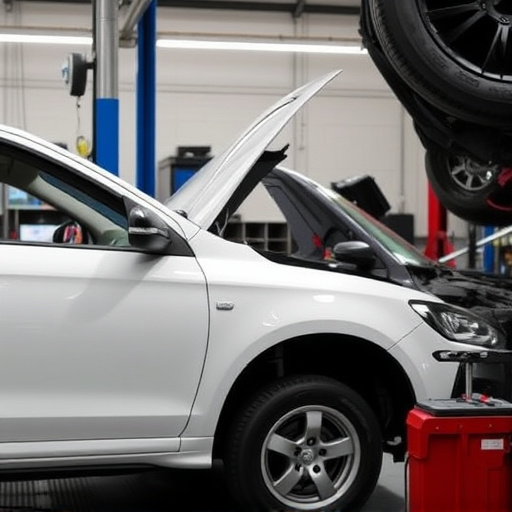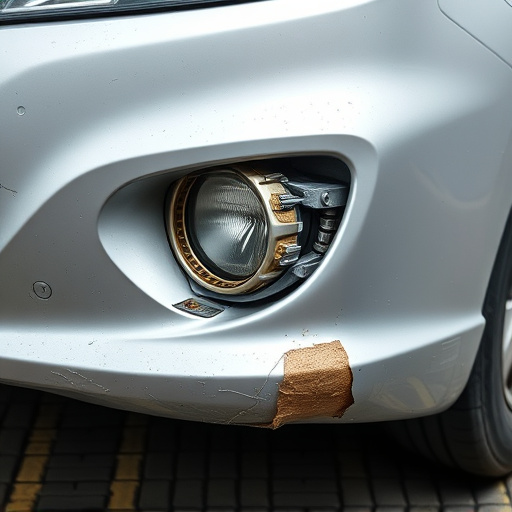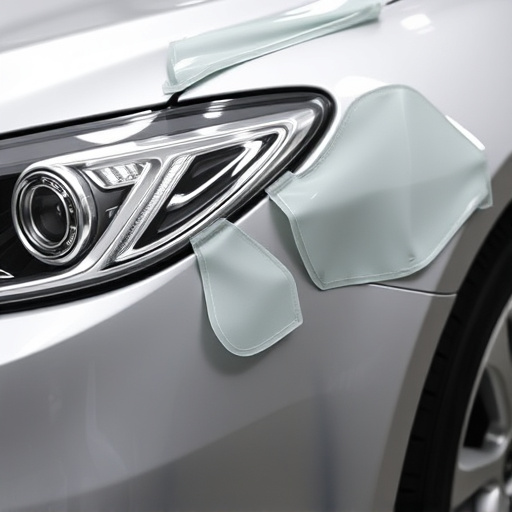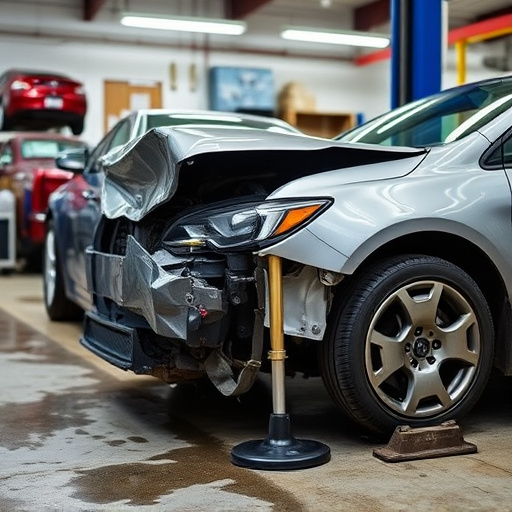Mercedes wheel alignment optimizes vehicle performance and safety by adjusting wheel position for parallelism and perpendicularity to the road surface. Regular services prevent uneven tire wear, improve handling and control, enhance fuel efficiency, and extend tire life, ultimately saving costs compared to repairs like car scratches or auto glass damage. It's a sophisticated process requiring specialized equipment and skilled technicians to adjust camber, caster, and toe angles for front and rear wheels, ensuring a comfortable ride and extended lifespan of critical components.
“Mercedes wheel alignment is a critical maintenance practice that ensures your vehicle’s stability, safety, and performance. This article delves into the intricacies of Mercedes wheel alignment, offering insights into its basic concepts and significant benefits. We explore the distinct requirements for front and rear wheel alignment, highlighting their individual importance in your Mercedes’ overall handling. Furthermore, we break down the meticulous process technicians employ to achieve precise alignment, ensuring your Mercedes drives smoothly and securely on every journey.”
- Understanding Mercedes Wheel Alignment: Basics and Benefits
- Front vs Rear Wheel Alignment: Individual Importance
- The Process: How Technicians Ensure Precise Alignment for Your Mercedes
Understanding Mercedes Wheel Alignment: Basics and Benefits

Mercedes wheel alignment is a crucial service for maintaining your vehicle’s performance and safety. It involves adjusting the position of your car’s wheels to ensure they are parallel to each other and perpendicular to the road surface. This process directly impacts handling, tire wear, and overall driving comfort. By correctly aligning the front and rear wheels, drivers can expect improved control, better fuel efficiency, and extended tire life.
Misalignment can lead to uneven tire wear, causing one side of your tires to degrade faster than the other. Over time, this can result in handling issues and potentially increase the risk of accidents. Regular Mercedes wheel alignment services prevent these problems by keeping your wheels precisely set. It’s a proactive step towards maintaining your vehicle’s health and ensuring smooth, safe driving—a far cry from the hassle of dealing with issues like car scratch repair or auto glass repair, not to mention costly autobody repairs down the line.
Front vs Rear Wheel Alignment: Individual Importance

In a Mercedes vehicle, both front and rear wheel alignment play crucial roles in ensuring optimal performance and safety. While they share common goals—like maintaining straight-line tracking and enhancing fuel efficiency—each has distinct influences on how your car handles. Front wheel alignment, primarily responsible for steering geometry, dictates how your car responds to turns and cornering, affecting both comfort and control. Rear wheel alignment, on the other hand, focuses on keeping the wheels parallel to each other and perpendicular to the ground, ensuring smooth braking and avoiding uneven tire wear, which is particularly important for maintaining the integrity of your car’s bodywork and overall auto body repair needs.
Improper alignment can lead to noticeable issues like vehicle pull (towing towards one side), uneven tire wear, and increased steering effort. Regular Mercedes wheel alignment services at a collision center are essential to mitigate these problems. By keeping both front and rear wheels aligned, you not only enhance the overall driving experience but also contribute to longer tire life and minimize damage to your car’s bodywork over time.
The Process: How Technicians Ensure Precise Alignment for Your Mercedes

Mercedes wheel alignment is a meticulous process that requires advanced equipment and expert knowledge. Technicians begin by inspecting the vehicle’s suspension components, wheels, and tires to identify any misalignments or damage. They then use specialized tools to measure and adjust the camber, caster, and toe angles of both front and rear wheels. This involves precise frame straightening techniques to ensure that all wheels are aligned perfectly with the car’s chassis.
By carefully adjusting these parameters, technicians can achieve optimal handling, enhance tire wear, and improve overall vehicle stability. Advanced auto body repair methods may be employed to correct any structural misalignments, further reinforcing the vehicle’s frame. Ultimately, proper Mercedes wheel alignment not only contributes to a smoother ride but also extends the lifespan of your tires and suspension components, making it an essential part of regular car repair services.
Mercedes wheel alignment is a crucial service that ensures your vehicle’s performance, safety, and longevity. By understanding the benefits of both front and rear wheel alignment, you can make informed decisions to maintain your Mercedes’ optimal handling and stability. The precise process involved in achieving perfect alignment guarantees a smooth ride, improved fuel efficiency, and enhanced tire life. Don’t underestimate the importance of regular wheel alignment checks – it’s a key element in keeping your Mercedes running at its best.














